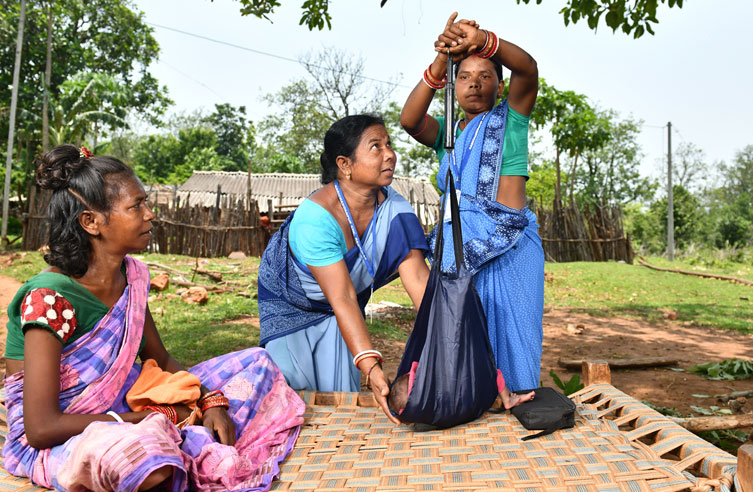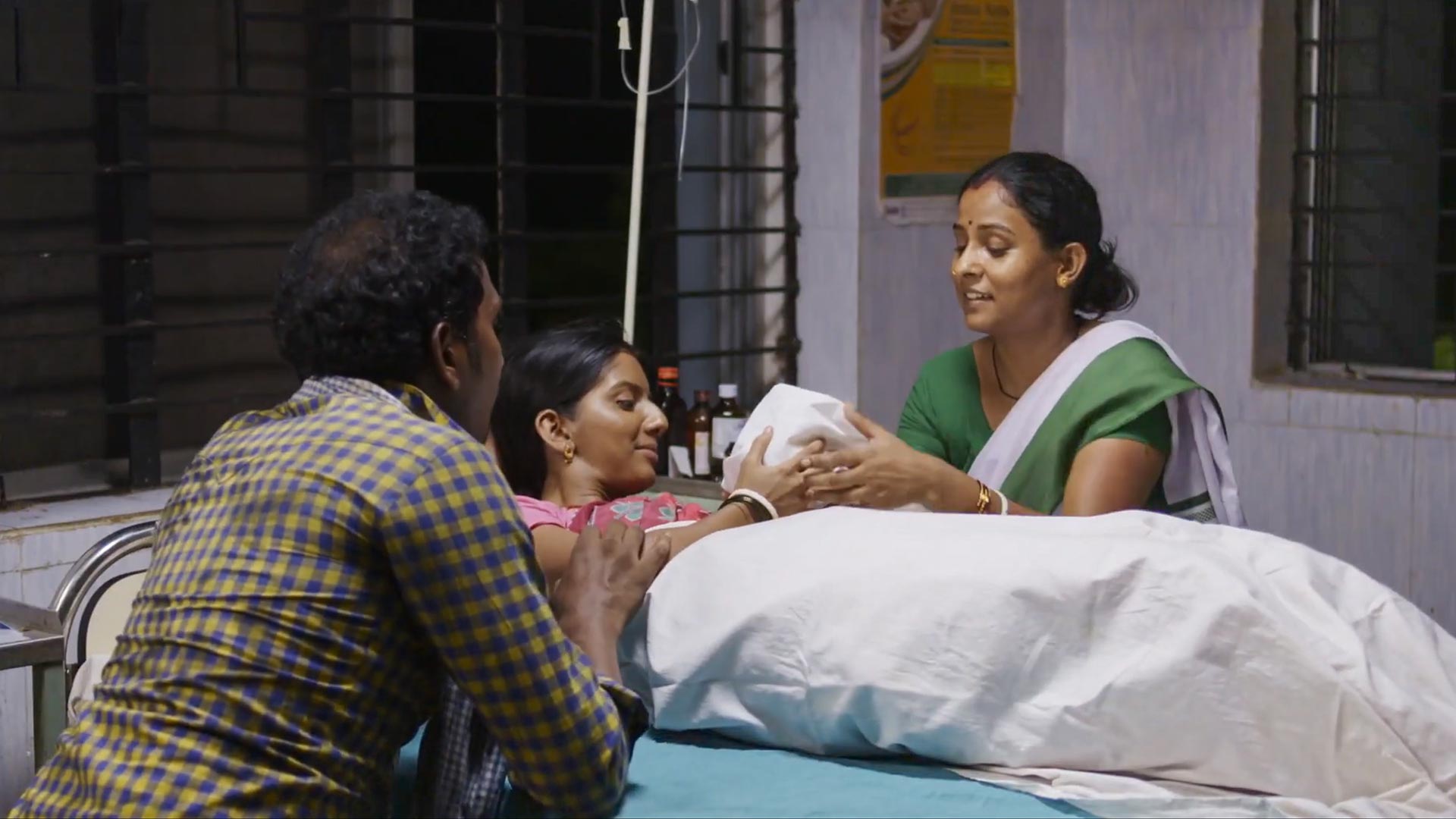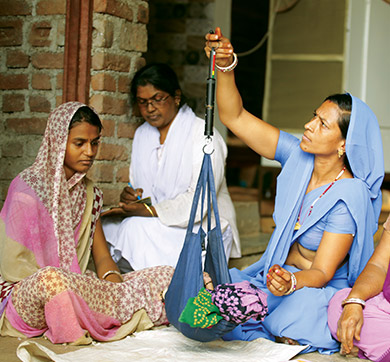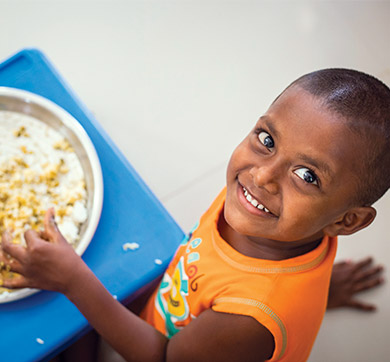March 2022 | 1920 words | 7-minute read
20 year-old Minota from Dhatkidih village in the tribal heartland of Jharkhand’s Seraikela-Kharsawan district went into labour in the 26th week of her pregnancy. Her family rushed her to a private nursing home where she delivered a premature baby weighing 950 grams. The parents resigned themselves to their fate when doctors stated there was little hope of their firstborn’s survival due to low birth weight.
Two blocks away, Mamta Devi — a government accredited social health activist (ASHA) or ‘sahiyya’ as they are called in Jharkhand, trained under Tata Steel Foundation’s (TSF) Maternal and Newborn Survival Initiative (MANSI) — heard about the incident and rushed to Minota’s house. “On seeing the frail newborn, I wasn’t sure how I was going to save him, but I put aside all my fears and put my training into practice,” says Mamta Devi. She immediately started simple interventions that she had learnt as part of MANSI’s ‘Home-based Newborn and Childcare’ (HBNCC) methodology; her unrelenting efforts eventually bore results 42 days later when baby Ayush started gaining weight, beating all odds.
Not far away in Urmal village, a 19-year-old young mother’s newborn lay motionless after delivery. The local sahiyya, Manita Devi says, “I had to persuade the family to let me examine the child. It was a case of asphyxia neonatorum, and I could feel the child's pulse and heartbeat. Using a suction pipe, I quickly sucked out mucus from the child's nose.” Suddenly, the child began to cry and so did his parents out of sheer joy. The child Jagannath Munda is now three years old and healthy.
A matriculate, Manita, trained under TSF’s MANSI, has facilitated over 50 successful deliveries and was felicitated by Prime Minister Narendra Modi for saving the lives of newborn babies like Jagannath.
Improving maternal and newborn health is one of the unfinished agendas of United Nations’ (UN) Millennium Development Goals and is in accord with the UN’s Sustainable Development Goals (SDGs) for global health. According to UNICEF, although India accounts for nearly one-fifth of the world’s annual childbirth with 25 million children born each year, it also contributes to nearly a quarter of the global newborn mortality burden, with an infant dying every minute*. Realising that infant and maternal mortality are a core developmental challenge in the regions where it operates, TSF took concerted steps towards starting the MANSI.
The beginning
“In 2010, India’s infant mortality rate was 47 but in Seraikela it was 53,” says Amit Kumar, senior executive, Tata Steel Rural Development Society (TSRDS), adding, “We therefore undertook a six-month assessment study in the same year in Seraikela block and found that of the 24 deaths, out of the 390 childbirth recorded, 23 were preventable, as the primary causes were low birth weight, pneumonia, infection, asphyxia, and prolonged delivery. With timely medical intervention and proper care these deaths could have been averted.” The startling findings led to the birth of MANSI.

In a unique public-private partnership, TSF joined hands with the Government of Jharkhand; Society for Education, Action and Research in Community Health (SEARCH), Gadchiroli, a social service organisation and pioneers of the HBNCC model; and the American India Foundation (AIF), which provides humanitarian aid, to pilot MANSI and deploy the proven HBNCC approach in the predominantly tribal communities of Jharkhand’s Seraikela block. With a population of 81,000 spread across 167 villages, the block has limited access to basic health amenities. “The extent of the problem called for a committed model and persistence,” says Sourav Roy, chief, Corporate Social Responsibility, Tata Steel.
Making the community health workers or sahiyyas the primary agents for driving the initiative, TSF started with a three-pronged strategy: first, to enhance the capacity of the village-based healthcare system by training local health volunteers, working under the Government of India’s flagship programme National Health Mission (NHM), to provide accessible and affordable healthcare facilities to the disadvantaged communities; second, to arm the volunteers with adequate resources to carry out interventions; and, finally, to monitor and evaluate their work, to ensure effective interventions. “We provided the sahiyyas with rigorous in-person training in prenatal (before birth) and postpartum (after birth) healthcare, for both the mother and child. Our 30-member MANSI project team — trained and accredited by SEARCH Gadchiroli to execute the HBNCC model, incorporated in the NHM to be implemented across the country — not only enhances the skills of sahiyyas but also handholds them along the way,” says Mr Kumar.

According to Anupam Sarkar, state project coordinator, AIF, which has partnered with TSF in funding, technical expertise and programme implementation, “We cannot reach out to all the beneficiaries; hence our aim is to capacitate all our frontline stakeholders with the requisite knowledge and skillsets.
Within five years of MANSI’s inception in 2011, the overall mortality rates dropped by 50 to 60 per cent. Neonatal mortality rate (NMR) reduced by 61.2 per cent, infant mortality rate (IMR) by 63.1 per cent and child mortality rate (CMR) by 55 per cent. This success encouraged Tata Steel to scale up the programme in 2015, from 167 pilot villages to around 1700 villages, covering Jharkhand and Odisha.
The second phase
“The evidence-based success in Seraikela block emboldened us to deploy the programme at the district level,” states Mr Kumar. Besides adopting Seraikela-Kharsawan district, MANSI’s second phase from 2015-2020 saw TSF extending the programme to two blocks in the adjacent West Singhbhum district and to two blocks in Odisha, leading to an overall footprint in 1700 villages spread across 12 blocks in three districts of Jharkhand and Odisha. The number of sahiyyas under its wings increased 12-fold, from 200 to 2400. This time, however, TSF focused on capacitating the government-appointed ‘sahiyya saathis’ who manage a group of 15-20 sahiyyas in their areas.

Given the limited project staff and increased operation area, tracking and monitoring of all high-risk cases emerged as a challenge. To tackle it, TSF developed ‘Operation Sunshine’, a real-time web-based mobile tracking application that is pre-loaded on Android tablets and given to the MANSI project staff. It displays the compiled field data that can be viewed by project team and government officials for monitoring and improving the efficacy of interventions by the sahiyyas and project staff. “Within 16 months of the launch of Operation Sunshine in 2018, the MANSI programme recorded a 47.8 per cent reduction in death rate, a 20 per cent increase in identifying high-risk cases and a 17 per cent increase in tracking the efficiency of such cases,” says Mr Kumar. Operation Sunshine is amongst the top 5 health innovation platforms in the country, and the NHM is considering adopting it as a standard platform to replicate countrywide.
“Although we achieved success in reducing mortality rates, the levels were still high. The findings of a causal study revealed that besides lack of access to hospitals and the monetary cost involved — leading to a preference to deliver at home — prevalent customs, social beliefs, superstitions, and patriarchal attitude also contributed to the problem,” says Mr Roy, adding, “Thus, TSF focused on connecting not only with expectant mothers but also with their husbands and mothers-in-law, to educate them on the issues of childbirth and women’s health overall.”

Following these interventions, the second phase of MANSI saw an overall 40 to 45 per cent reduction in mortality rates across the 12 blocks, with IMR dropping from 43.9 in 2015 to 24.8 per cent in 2020, CMR from 56.3to 29.7 per cent and NMR from 31.2 to 18.3 per cent
The ten-year mark
“As we celebrate 10 years of MANSI’s successful implementation this year, we also celebrate achieving the UN SDG targets in the Seraikela block almost a decade in advance,” says Dr Anuj Bhatnagar, head, Public Health, Tata Steel. The endline survey done in the block in 2020 recorded the NMR as 12, in line with the SDG-3 target, and the CMR as 17.2 against the SDG-3 target of 25. MANSI was also recently recognised by the BRICS (Brazil, Russia, India, China and South Africa) Council as the best public health programme. “The success of the programme also comes from how we are marrying the conventional sociological approaches, which are unlikely to change for the next decade or so, to cutting-edge technology, science and medical evidence in a way that the digital or scientific approach does not overpower or intimidate the sociological fabric,” he adds.
“With the help of MANSI, Seraikela block became the centre of excellence for mother and child. We were able to save the lives of many children and mothers, where even the doctors had given up hope, through the timely intervention and proper care by the sahiyyas and TSF project staff. I would like to thank the entire MANSI team for bringing about a behavioural change towards a safer environment for children and expectant mothers,” says Ms Akay Minz, state program coordinator, CM Cell, NHM, Jharkhand.
TSF’s hyperlocal talent strategy has helped in the project’s sustainability. With pregnancy being an intimate matter, hiring of project staff from the village to work along with the sahiyyas creates immense trust and comfort in the community.

With close to 2400 sahiyyas, each bonded to at least three to four women, a strong network of about 10,000 women exists today, creating a huge amount of social capital and leadership among rural women. “MANSI has created a unique identity for the sahiyyas of Jharkhand who have also shared their story at an international forum. It’s a proud moment for us that a simple woman from the village has reached this stage,” says Ms Minz.
In MANSI’s third phase, TSF has expanded the programme’s scope and reach by introducing MANSI Plus, one of the country’s largest consolidated maternal, neonatal and infant mortality health programme. Taking a lifecycle approach, MANSI Plus is addressing issues like adolescent health, right marriageable age, teenage pregnancies and malnutrition — factors contributing to the mortality rate.

According to Mr Roy, “MANSI Plus will enable us to be with the girl child from the time she is born up to the time she gives birth, thereby reducing intergenerational inequity which could be due to nutritional, sociological or inadequate institutional healthcare. This way we will tackle the problem at its root. We started with one block in 2011, then expanded to one district in 2015, and, in the third phase, we are covering the entire Kolhan division.
“Our purpose now is to make the change irreversible by creating capacity for self-sustenance in the public healthcare system itself by establishing MANSI specialised centres in partnership with the NHM. MANSI Plus today is a part of the NHM’s annual operating plan in Jharkhand, with the government to fund one-third of the programme.”
MANSI’s proven success in reducing infant and maternal mortality rate during childbirth makes it an ideal development model for replication nationwide, and that is exactly what Tata Steel is aiming to achieve.

At a glance
- Pilot phase (2011-2015): Working with 200 sahiyyas and 30 project staff in Jharkhand’s Seraikela block with a population of 81,000 in 167 villages
- Second phase (2015-2020): Working with 2400 sahiyyas and over 40 project staff in 1700 villages across 12 blocks in two districts each of Jharkhand and Odisha
- Third phase (2021 onwards): Working with nearly 2500 sahiyyas and 200+ project staff in Jharkhand’s Kolhan division, covering 38 blocks with a 50-lakh population.
—Arushi Agrawal













